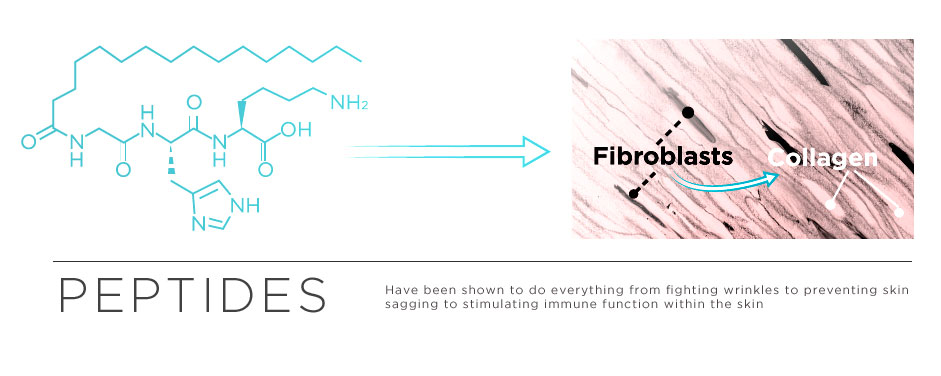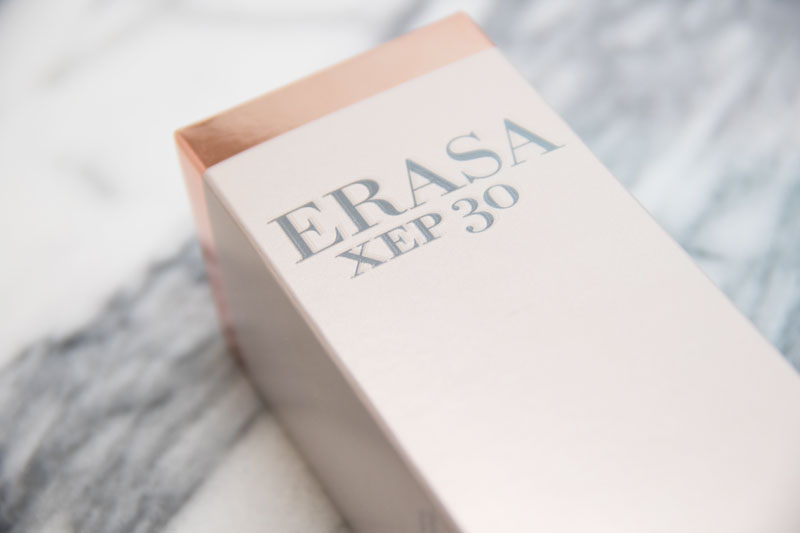
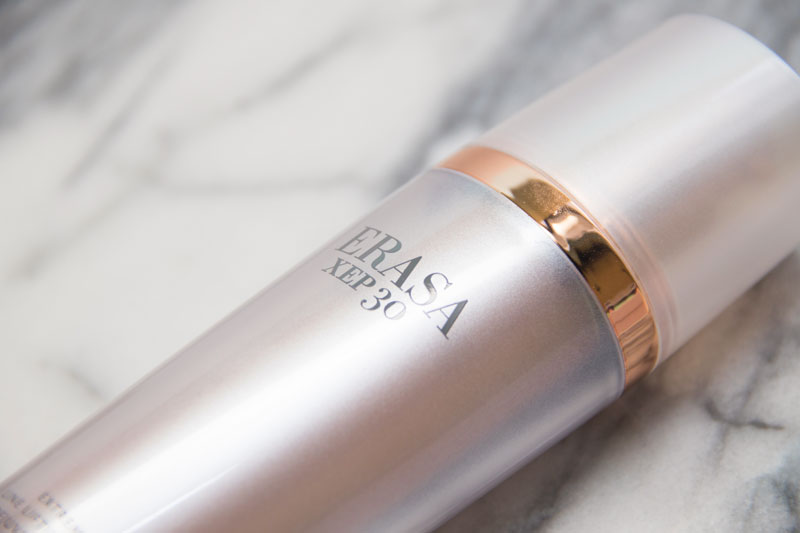
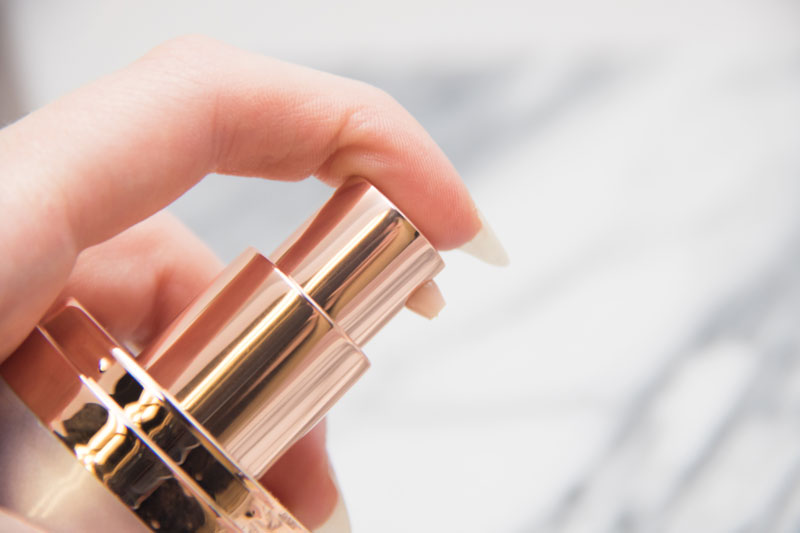
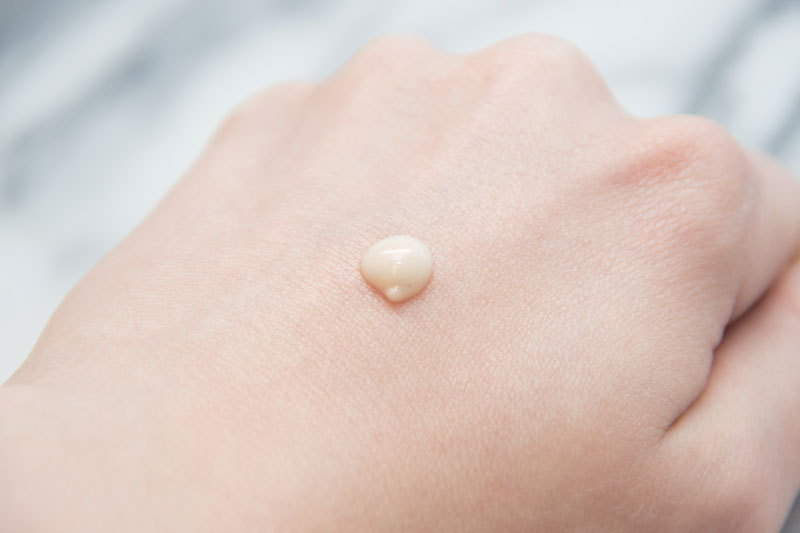

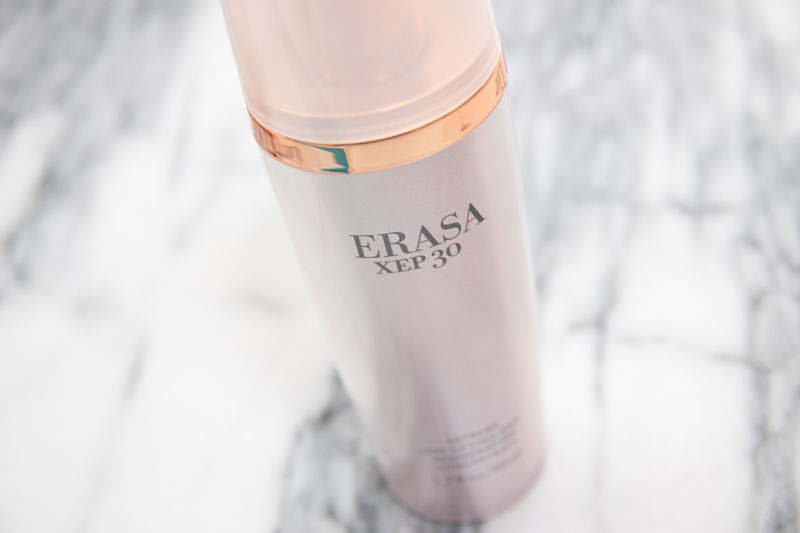
It’s no secret that I’m a skincare aficionado; ever since I was a little girl, I loved mixing my own skincare products and pouring over books by Dr. Leslie Baumann (my idol!) and Paula Begoun, among others. But as FutureDerm nears its fourth anniversary as an official company, I’ve been looking back on past blog posts and realized the following: FutureDerm has focused a lot on powerhouses like retinol and vitamin C, and natural extracts of one sort or another, but relatively little attention has been given to peptides, one of the unsung heroes of modern-day skincare. So I wanted to dedicate today’s post to discussing one of my favorite peptides – neuropeptides – what they’re doing in your skincare, and my favorite neuropeptide-containing product.
What are Neuropeptides?
Neuropeptides are simply sequences of two to 40 amino acids, with over 50 neuropeptides identified thus far. The 11 neuropeptides that are synthesized by the human body are typically produced in response to pain, temperature, inflammation, and injury, among similar other triggers. Neuropeptides work by contacting epidermal and dermal cells and subsequently managing the functions of several skin cells, such as skin inflammation, wound healing, and the skin’s immune system. Neuropeptides also work by affecting neurotransmitters in the skin so that the nerve cells in the skin will become relaxed, thus making the skin appear smoother and less wrinkled (Clinical and Basic Immunodermatology, Experimental Dermatology, Livestrong). When applied topically, neuropeptides such as argireline and XEP-30 are known to exhibit anti-aging effects on the skin, including fighting fine lines and wrinkles, stimulating collagen production, and tightening the skin. According to the Textbook of Skin Aging, neuropeptides work in two ways: by either inhibiting the release of neurotransmitters like adrenaline and noradrenaline, and by halting the formation of a complex necessary for neurotransmitter release known as the SNARE complex.
Do I Really Need Neuropeptides in My Skincare?
Look, I’ll be straight with you – you don’t absolutely need neuropeptides in your skin, but if you want to keep along this ultra-minimalist, barebones line of thinking, then you can probably do without retinol, vitamin C, vitamin E, and almost any other skincare ingredient that’s been discussed on this blog. If you choose to eschew neuropeptides (or retinol or vitamin C and other helpful ingredients), it’s more or less the equivalent of never repairing your house when you notice a leak in your roof or a crack in your foundation; you may be fine not fixing it for a few years, but sooner or later the issue will be beyond full repair and you’ll wish that you had done something about it earlier. So do you need neuropeptides? No, you don’t absolutely need them, but they really do help to keep your skin feeling and looking healthy. If nothing else, consider this; unlike plant extracts and many lab-synthesized ingredients, neuropeptides are either derived from or modeled on naturally-synthesized neuropeptides (depending on which one you use), and as such have a much lower probability of inducing irritation.
What’s Your Favorite Product Containing Neuropeptides?
There aren’t too many products yet who employ neuropeptides in their formulations, so this is a pretty easy question – ERASA XEP-30! All kidding aside, ERASA XEP-30 truly is a fabulous anti-aging product, especially if your biggest concerns are fine lines and wrinkles (and not other signs of aging, like discoloration or dry skin). The first of ERASA XEP-30’s remarkable neuropeptides is X-50 Myocept, which is manufactured by Infinitec. X-50 Myocept works by inhibiting the formation of the SNARE complex and minimizing neuronal exocytosis, thus ensuring that neurons can deliver Botox-like effects without the drawbacks of your typical Botox treatment (Propsector). An in-house study by Infinitec examined the effects of topically-applied X-50 Myocept on 30 volunteers (aged 40-55) who had expression lines. Over 28 days, experimental participants on average saw a 20% decrease in the appearance of expression lines, with some patients seeing up to a 27% improvement (Infinitec).
ERASA XEP-30 also employs the synthetic neuropeptide argireline, which was shown to improve peri-orbital wrinkles by a rate of 48.9%, according to research published in the American Journal of Clinical Dermatology. The Journal of Cosmetic and Laser Therapy also found that topically-applied argireline increased the amount of type I collagen over a period of six weeks, thus suggesting that argireline may help to make skin appear more plump and full. So in short, argireline much like Botox (the botulinum toxin), inhibits the neurotransmitter release at the neuromuscular junction so as to halt the formation of fine lines and wrinkles – what’s not to love (Acta Biochimica Polonica)?

ERASA XEP-30’s standout neuropeptide (and titular ingredient) is XEP-30. Since it is a relatively new peptide, there is little publicly-available evidence discussing XEP-30’s effects, but what is available is exceptionally promising. ERASA claims that XEP-30 is a “patented neuropeptide with the most line-relaxing effects to date”. XEP-30 is also a biomimetic (read: mimicking a process found in nature) snail neurotoxin that can erase the appearance of deep lines and wrinkles much in the same way that Botox can, but without causing Botox’s infamous “frozen face”. The fruit of a year-long collaboration between Activen and BioMimetic Laboratories, XEP-30 is based on the XEP-18 neuropeptide, which was derived from cone snail toxin that has exceptional myorelaxant (muscle relaxing) abilities.
Bottom Line
Neuropeptides are sequences of amino acids that are naturally synthesized by the body as a response to stimuli like injury and temperature change. When applied topically, however, many neuropeptides exhibit phenomenal anti-aging prowess, especially in regards to treating fine lines and wrinkles. My favorite neuropeptide-containing product thus far is ERASA XEP-30, which combines the neuropeptides X-50 Myocept, argireline, and XEP-30, all of which have demonstrated prowess in treating fine lines and wrinkles and exhibiting effects similar to Botox, without Botox’s characteristic “frozen face”. While I would like to see more publicly-available and peer-reviewed studies about these neuropeptides, what I’ve read thus far is both promising and exciting. If you’re interested in a more comprehensive ingredient breakdown, read my review on ERASA XEP-30 here. Questions? Comments? Let me know!


